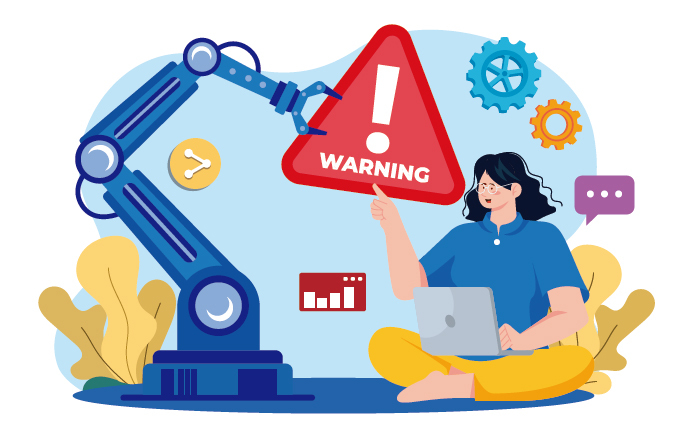Beyond .com: the risks of not protecting your domain and brand name
July 16, 2025 | Iñigo de las Heras Nuin
Dominios genéricos (gTLDs)Dominios territoriales (ccTLDs)
In today's digital environment, relying solely on a single domain —usually a .com or .es— is an incomplete strategy. Although many companies believe that having their main domain name is enough to operate, the truth is that not registering additional extensions can carry significant costs, both in terms of reputation and SEO positioning.
This article is aimed at business decision-makers who only have one registered domain and want to understand the real risks of not acting, as well as the strategic opportunities of expanding their domain portfolio.
The real risk: what happens if someone else registers your brand with another extension?
The main reason to register variations of your domain with other extensions is not positioning. It's brand protection.
Every day, thousands of new domains are registered. Many of them are linked to existing brands, especially if they haven't been digitally protected. This can lead to:
- User confusion: a customer looking for you might end up on a different site with a similar address.
- Brand positioning loss: another domain could start ranking for searches related to your company.
- Damaged reputation: in more severe cases, third parties might use your brand in alternative domains to launch scams, distribute malware, or publish unauthorized content.
- Legal difficulty in recovering the domain: initiating a judicial or arbitration procedure to recover a domain can be costly, slow, and doesn’t always guarantee a favorable outcome.
This phenomenon, known as cybersquatting, is especially common among companies that have gained some notoriety without implementing a solid domain protection strategy.
Moreover, even if you’re not planning to expand into other countries or markets today, reserving domains with relevant extensions ensures that you have them available in the future. It's not just about protection: it's about keeping the doors open to growth without external barriers.

The cost of not registering is often higher than registering
Registering a domain with an additional extension —such as .net, .eu, .shop, .co, .fr or .lat— costs just a few euros per year in most cases. Compared to the cost of losing qualified traffic, managing a reputational crisis, or initiating a legal process, preventive registration is a minimal and reasonable investment.
At Entorno Digital, we recommend companies identify the most relevant extensions for their sector, geographic markets, and positioning goals, and reserve them before someone else does.
SEO opportunities: how to improve your ranking with a multi-extension strategy
Beyond protection, there is real value in registering additional domains to improve your visibility in search engines. There are two main approaches:
1. Local positioning with ccTLDs
ccTLDs (country code top-level domains) are geographic extensions like .fr (France), .de (Germany), .it (Italy), .com.mx (Mexico). Google interprets these extensions as geolocation signals, which helps sites rank better in local search results.
If your company operates in several countries or plans to do so, having a localized website version under a local domain can significantly improve your SEO performance in those markets. Even if you’re not using it now, having registered that domain in advance gives you flexibility and speed when you decide to expand.
2. Thematic segmentation with gTLDs
gTLDs (generic top-level domains) like .tech, .shop, .solutions, .agency, or .online allow you to create more descriptive, specific, and conversion-oriented URLs. This brings several advantages:
- Clarity for users: an address like www.brand.shop immediately communicates the type of content offered.
- Higher CTR in search engines and ad campaigns: relevant, segmented URLs generate more clicks.
- Brand alignment: you can use gTLDs to create themed pages or business divisions with their own identity without abandoning your brand.
Google treats gTLDs as global domains (just like .com), so there is no SEO penalty as long as they are properly configured.
How to start a multi-extension strategy?
It’s not about registering hundreds of domains, but about building an efficient strategy tailored to your business. At Entorno Digital, we recommend:
- Registering the most common extensions linked to your brand (.net, .org, .eu, .co).
- Including ccTLDs from countries where you operate or plan to position in the future.
- Evaluating gTLDs relevant to your sector or business lines.
- Implementing redirects, localized content or landing pages as appropriate.
- Centralizing technical and legal management of all domains on a single trusted platform.
Can you block a domain name globally?
Broadly speaking, yes. Services such as Trademark Clearinghouse, AdultBlock, or DPML allow you to block your brand across hundreds of domains, giving you control over global brand usage and letting you block any registration that could harm or misrepresent you.
Don’t neglect your brand — you might regret it
Having a single domain is no longer enough to protect a brand or maximize its digital potential. Registering additional extensions not only prevents conflicts: it also opens the door to new growth opportunities, international expansion, and brand consolidation.
And even if you don’t use those domains today, reserving them allows you to decide when and how to launch new business lines, internationalize your site, or run targeted campaigns without depending on external factors.
At Entorno Digital we help you assess your current situation, identify priority extensions, and implement a domain strategy tailored to your goals.











